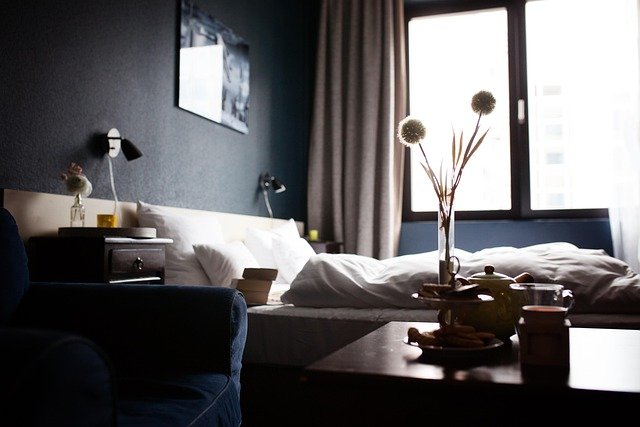Bioluminescent Decor: Illuminating Homes with Nature's Glow
In a world where technology and nature intertwine, a captivating trend is emerging in home design: bioluminescent decor. This innovative approach harnesses the ethereal beauty of light-emitting organisms to create enchanting, sustainable illumination. From glowing planters to luminous art installations, bioluminescent elements are transforming living spaces into magical, otherworldly environments that blur the line between science and art.

The key to bioluminescent lighting lies in the interaction between a light-emitting molecule called luciferin and an enzyme called luciferase. When these components combine with oxygen, they produce a cool, blue-green glow that requires no electricity. This natural light source is not only energy-efficient but also produces a soft, calming ambiance that cannot be replicated by traditional lighting methods.
From Ocean Depths to Living Rooms
The journey of bioluminescent decor from concept to reality has been nothing short of remarkable. Early experiments focused on cultivating bioluminescent algae in small, contained environments. These living lamps gained popularity among eco-conscious consumers and design enthusiasts, sparking a wider interest in the potential of bioluminescent home accessories.
As the technology advanced, designers began incorporating bioluminescent elements into a variety of decor items. Glowing planters that house both traditional plants and light-emitting organisms have become statement pieces in modern homes. These dual-purpose containers not only provide a unique lighting solution but also serve as conversation starters, bridging the gap between functional decor and living art.
The Aesthetic Appeal of Living Light
One of the most striking aspects of bioluminescent decor is its ability to create a truly immersive atmosphere. The soft, pulsating glow emitted by these living light sources adds a dynamic element to interior spaces, transforming static rooms into ever-changing environments. This effect is particularly impactful in bedrooms and meditation spaces, where the gentle illumination promotes relaxation and a connection to nature.
Interior designers are embracing the versatility of bioluminescent elements, incorporating them into various design styles. In minimalist interiors, a single glowing sculpture can serve as a focal point, its organic light complementing clean lines and neutral palettes. Conversely, in more eclectic spaces, clusters of bioluminescent objects create a whimsical, almost fantastical ambiance, reminiscent of bioluminescent bays and glowworm caves.
Practical Considerations and Care
While the allure of bioluminescent decor is undeniable, it does require specific care and maintenance to thrive. Most bioluminescent organisms used in home decor are photosynthetic, meaning they need exposure to light during the day to glow at night. This natural cycle aligns well with human circadian rhythms, making these living lights an excellent choice for bedrooms and relaxation areas.
Maintaining the proper environment for bioluminescent decor involves regular feeding and occasional cleaning. Many manufacturers provide specialized nutrient solutions and care instructions to ensure the longevity of their products. While this may seem daunting to some, enthusiasts argue that the unique beauty and sustainable nature of bioluminescent lighting far outweigh the additional care requirements.
The Future of Illumination
As we look to the future of home design, bioluminescent decor stands at the forefront of a movement towards more sustainable and nature-inspired interiors. Ongoing research in biotechnology and genetic engineering promises to expand the palette of bioluminescent colors and intensities available to designers and homeowners alike.
The potential applications extend beyond static decor items. Imagine walls coated with bioluminescent paint that comes alive at night, or outdoor pathways lined with glowing plants that guide your way without electrical lighting. These concepts are not far from reality, as scientists and designers collaborate to push the boundaries of what is possible with living light.
Ethical and Environmental Considerations
As with any trend that involves living organisms, the use of bioluminescent decor raises important ethical and environmental questions. Responsible manufacturers are addressing these concerns by developing closed-loop systems that ensure the well-being of the organisms and minimize environmental impact. Many are also investing in research to create synthetic alternatives that mimic the glow of natural bioluminescence without the use of living creatures.
The sustainability aspect of bioluminescent lighting is particularly appealing in an era of increasing environmental awareness. By harnessing a natural process that requires no electricity and produces no heat, these living lights offer a glimpse into a future where our homes could be illuminated by the gentle glow of nature itself.
Embracing the Glow
Bioluminescent decor represents more than just a passing trend; it embodies a shift in how we think about lighting and our connection to the natural world. As we continue to seek ways to bring nature into our living spaces, these living lights offer a unique solution that is both beautiful and sustainable.
For those ready to embrace this innovative approach to home lighting, the options are expanding rapidly. From small, desktop bioluminescent terrariums to large-scale installations, there are solutions to suit every taste and budget. As with any pioneering technology, early adopters will play a crucial role in shaping the future of bioluminescent decor, providing valuable feedback and driving further innovation in this exciting field.





